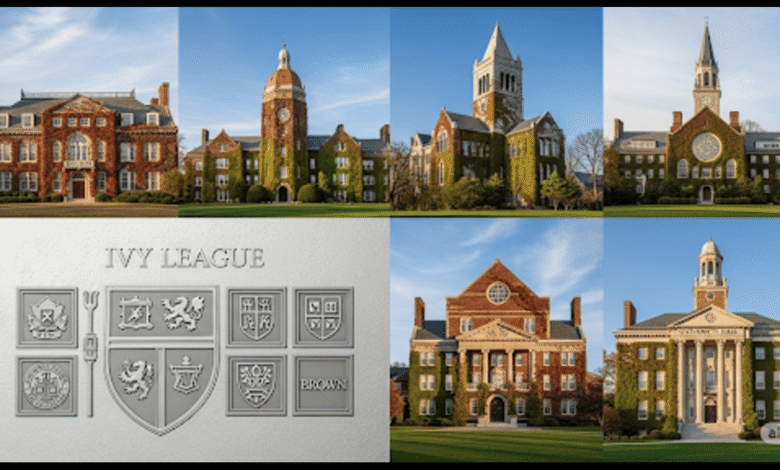Noted Octet in Higher Education: The Pillars of Academic Excellence

In the vast landscape of higher education, certain institutions or elements stand out as critical to shaping the future of knowledge, innovation, and leadership. One such term that has gained attention in academic circles is the “noted octet in higher education.” But what exactly does it mean?
The “noted octet” refers to a distinguished group of eight institutions, ideas, or frameworks within higher education that represent excellence, influence, and global impact. While interpretations may vary depending on context—such as region, academic field, or policy—the term generally denotes a collection of eight key entities shaping the academic world.
In this article, we’ll explore what the “noted octet” can represent, who belongs to it, why it matters, and the most frequently asked questions surrounding this concept.
What is the “Noted Octet” in Higher Education?
The phrase “noted octet in higher education” typically refers to a group of eight prominent universities or educational frameworks that are recognized for their consistent excellence in teaching, research, innovation, and global influence.
Depending on the context, this octet may include:
1. Ivy League Universities (U.S.)
Often considered the elite group of American institutions, the Ivy League includes Harvard, Yale, Princeton, Columbia, Dartmouth, Brown, University of Pennsylvania, and Cornell.
2. Russell Group’s Leading Eight (UK)
In the UK, the top eight universities from the Russell Group might include Oxford, Cambridge, Imperial College London, UCL, LSE, King’s College London, University of Edinburgh, and University of Manchester.
3. C9 League (China)
China’s counterpart to the Ivy League, the C9 League consists of top research universities including Tsinghua, Peking University, and Fudan University, among others.
4. Frameworks in Educational Leadership
In some educational policy discussions, the “noted octet” could refer to eight pillars or focus areas like Academic Rigor, Access & Equity, Technology Integration, Student Engagement, Faculty Development, Globalization, Funding Models, and Research Impact.
The term “noted octet” can thus be flexible, but always implies a top-tier, influential set of eight components or institutions within a national or global academic framework.
Why the Octet Matters in Academia
The octet isn’t just about prestige. These institutions or ideas:
- Drive educational innovation
- Set global academic standards
- Lead research in science, technology, humanities, and social sciences
- Attract top talent from around the world
- Shape educational policy and reform
- Influence societal development through education and outreach
Being part of a noted octet symbolizes not just academic strength, but also leadership, influence, and the ability to create real-world impact.
Characteristics of a Noted Octet Member
To be part of a recognized educational octet, an institution or element typically exhibits:
- Consistent academic excellence
- Strong research output
- Global collaborations and partnerships
- Notable alumni and faculty achievements
- High employability for graduates
- Influence in policymaking and public discourse
Whether it’s a university, a national strategy, or an academic model, the members of the noted octet set the tone for others to follow.
FAQs: Noted Octet in Higher Education
Q1: Is there an official global “noted octet” in higher education?
A: No, there is no single globally recognized list. The term “noted octet” is often used flexibly to refer to top 8 institutions or frameworks within a specific country or context.
Q2: Does the Ivy League represent the “noted octet” in the U.S.?
A: Yes, the Ivy League is the most cited version of a noted octet in American higher education. These eight universities are globally recognized for their academic heritage and excellence.
Q3: What is the C9 League, and how does it relate?
A: The C9 League is China’s version of elite universities, similar in concept to the Ivy League. These nine institutions lead in research, innovation, and academic influence in Asia.
Q4: Can a framework or educational principle be part of a noted octet?
A: Yes. In educational theory or reform, a noted octet may refer to eight core principles or focus areas essential to modern higher education systems.
Q5: Are members of the noted octet ranked purely by academics?
A: Not necessarily. While academic performance is key, factors like leadership, innovation, global reach, alumni impact, and policy influence also play a major role.
Q6: Can new universities join or replace members in the octet?
A: In theory, yes. The composition of a “noted octet” can change over time based on institutional growth, performance, and relevance in the academic world.
Q7: Why focus on an octet and not a broader or smaller group?
A: The number eight often reflects a balance—broad enough to include diversity, yet exclusive enough to maintain distinction. It’s symbolic of elite grouping without being too limiting or too generic.
Final Thoughts
The concept of the noted octet in higher education offers an insightful lens through which to view academic excellence and leadership. Whether referring to top-tier universities, key educational frameworks, or a blend of both, the octet serves as a model of what modern higher education aspires to be: impactful, inclusive, innovative, and globally connected.
As the world continues to evolve, so too will the makeup and meaning of the noted octet—remaining a powerful symbol of higher learning’s enduring influence.




